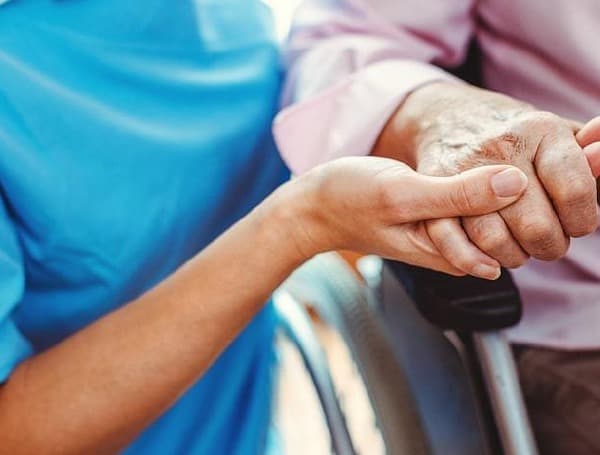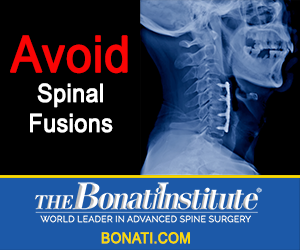Osteoporosis causes a weakening of the bones that can lead to an increased fracture risk. As the bones become less dense and thinner, a person is more susceptible to injury.
Many people do not realize they have osteoporosis until an injury, such as a fracture, occurs. The most likely places for broken bones are wrists, spine, hips, and legs. Height shrinkage, posture changes, lower back pain, and shortness of breath are warning signs of decreased bone density.
Checking for osteoporosis is especially important with age, as natural hormone changes can further reduce bone mineral density. The older a person is, the greater the risk of fractures.
Over 50 million people in the US have osteoporosis, with it being twice as common in women than in men. Osteopenia, the precursor to osteoporosis, is a condition that occurs when people have a lesser degree of reduced bone density. It can progress to osteoporosis if not corrected, but that is not always the case. It is estimated that 1 of every 3 adults aged 50 and over in the US have osteopenia. It is possible to take steps to prevent the advancement of osteopenia into osteoporosis.
Causes of Osteoporosis:
Physiological changes as you age are one of the most common reasons for declining bone mineral density, which can lead to osteoporosis. Aging reduces the production of new cells that replace those that die off and are resorbed by the body.
Bone breakdown occurs faster than new bone cell production. Hormonal decline, especially growth hormone (the stimulator of cell regeneration), plays a leading role in bone remodeling and is one of the causes of osteoporosis.
Here are the leading factors and causes of osteoporosis:
- Sex: Women are more likely to experience osteoporosis than men, especially after menopause.
- Age: Being over 50 increases the risk of weakening bones.
- Body size: People with smaller frames (bone structure) have less bone mass and are more susceptible to risks as bone density increases.
- Family history: If someone in your family has osteoporosis, you are at higher risk.
- Changes to hormones: Hormonal changes that occur with age can significantly reduce bone mineral density, including testosterone, HGH, and estrogen.
- Diet: Lack of vitamin D and calcium in food intake.
- Medications: Some medications can affect bone density, including:
- Anticoagulants
- Corticosteroids
- Diuretics
- Hormone therapies used in cancer treatments
- Proton pump inhibitors, such as for acid reflux
- Seizure medications
- High-dose steroid use
- Lifestyle: Some lifestyle factors increase your risk of developing osteoporosis:
- Tobacco use
- Sedentary lifestyle – lack of exercise
- Excessive alcohol consumption
- Medical conditions: Some health conditions, besides hormonal decline, can increase the risk of osteoporosis, including:
- Autoimmune disorders affecting bones: ankylosing spondylitis, rheumatoid arthritis
- Blood disorders or cancers
- Eating disorders that interfere with food mineral absorption
- Endocrine disorders such as thyroid problems, diabetes
- Gastrointestinal diseases such as Crohn’s disease, celiac disease, and colitis
How to Live Well with Osteoporosis
Having osteoporosis does put you at risk for debilitating and painful fractures, but you can learn to take steps to reduce those risks. You can also take painkillers to reduce the pain of a fracture. Your doctor may recommend hot or cold treatments. Relaxation techniques and biofeedback may help.
If you have osteoporosis, it is crucial that you take steps to reduce your risk of injury.
Here are some safety tips that can help you prevent fractures:
- Keep your home, workspace, and other places free of clutter that can cause tripping or falls
- Ensure that you are getting adequate vitamins and minerals from your diet
- Take vitamin and mineral supplements when necessary and directed
- Get a yearly physical and monitor your bone density
- Wear a seatbelt when riding in a car
- Use helmets, knee pads, and other protective gear when participating in any sports or riding a bicycle
- Install floor runners or carpet over slippery floors and secure area rugs to avoid slippage
- Use railings when walking up or down stairs
- Walk on grass if the pavement is slippery
- Do not stand on chairs or tables and have someone present for support when standing on a ladder
- Wear supportive footwear
- Check curb height before stepping up or down, and be wary of where you are walking and uneven pavement
- Install protective and sturdy railings in your shower or bath and use a rubber mat
- Use proper lifting techniques, and do not try to carry something too heavy
- If you have difficulty walking or trouble with balance, use a walker or cane for added support
- Always keep your cell phone close by for emergencies
- Consider wearing an emergency response device to alert if alone in case of a fall
Treatment Options
The precursor to creating a treatment plan is determining the cause of osteoporosis. For example, if poor diet and lifestyle habits are affecting your health, changing these areas can significantly benefit your overall well-being. If a hormonal imbalance, such as growth hormone deficiency or low testosterone, is present, hormone replacement therapy (HRT), such as HGH or testosterone, can provide significant benefits.
Exercise is a crucial factor for all adults. Not only can regular workouts help strengthen your bones, muscles, ligaments, and tendons, but they can also help improve your balance and decrease excess fat storage. Carrying too much weight puts excess stress on your bones. Keeping your body in shape helps to reduce the risk of potentially life-threatening fractures.
Other potential treatment options for osteoporosis include:
- Vitamin supplements: blood analysis can show if you have a vitamin D or calcium shortage that can benefit from supplementation
- Medications:
- Bisphosphonates such as alendronate, ibandronate, risedronate, and zoledronic acid
- Denosumab
- Bone-building medicines such as abaloparatide, romosozumab, and teriparatide
Is Osteoporosis Fatal?
Although osteoporosis itself is not fatal, the resulting fractures that could occur might lead to mortality and morbidity. Only one-third of the senior women who suffer a hip fracture will return to independent living. Although men have a lower risk, their one-year mortality rate is twice as high as women. As many as two in five adults over 50 may die within a year of fracturing their hip.
For those who make it past one year after a hip fracture, there is a strong chance they will not be able to return to the level of activity they had previously. That is why taking every precaution to prevent injury and maintain healthy bone density as you age is crucial.
Conclusion
Lowering your risk of developing osteoporosis begins in early adulthood, although it is never too late to start healthy habits. If you suspect you have osteopenia or osteoporosis, see your doctor at once. The sooner you act, the better off you will be.
Osteoporosis does not have to be a life sentence, as there are many options available for treatment. Get the help you need to live an active life.
Android Users, Click To Download The Free Press App And Never Miss A Story. Follow Us On Facebook and Twitter. Sign up for our free newsletter.
We can’t do this without your help. Visit our GiveSendGo page and donate any dollar amount; every penny helps.


